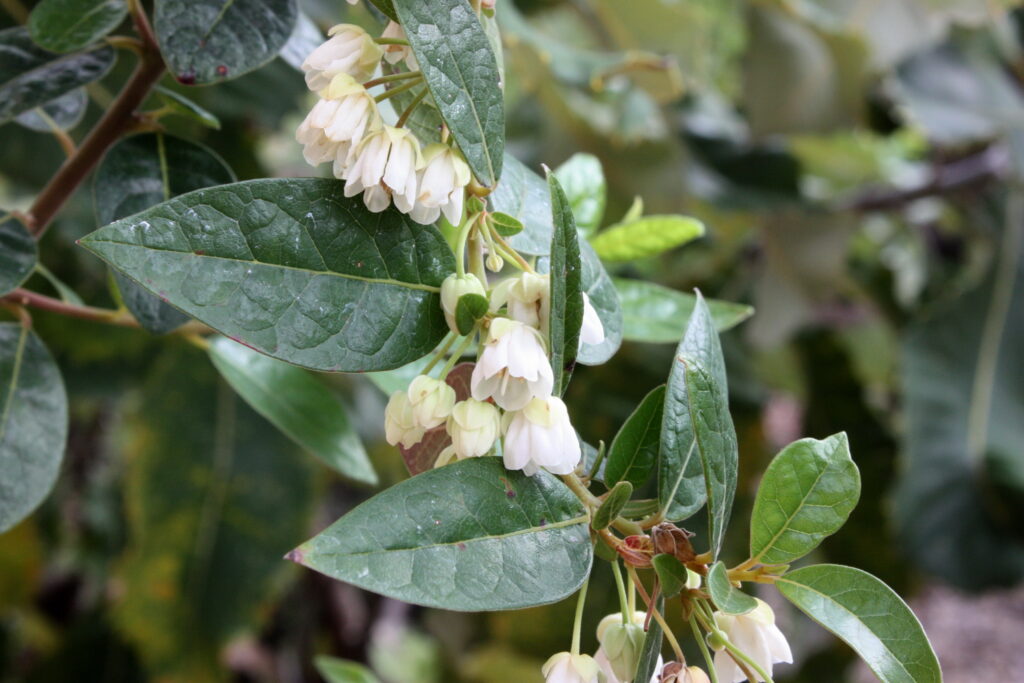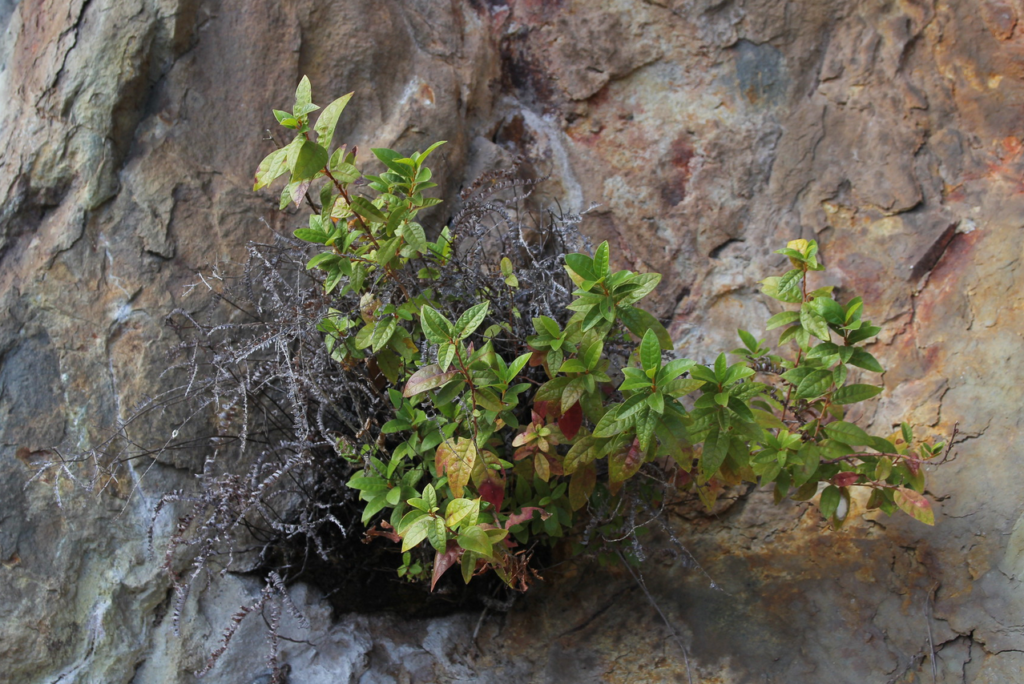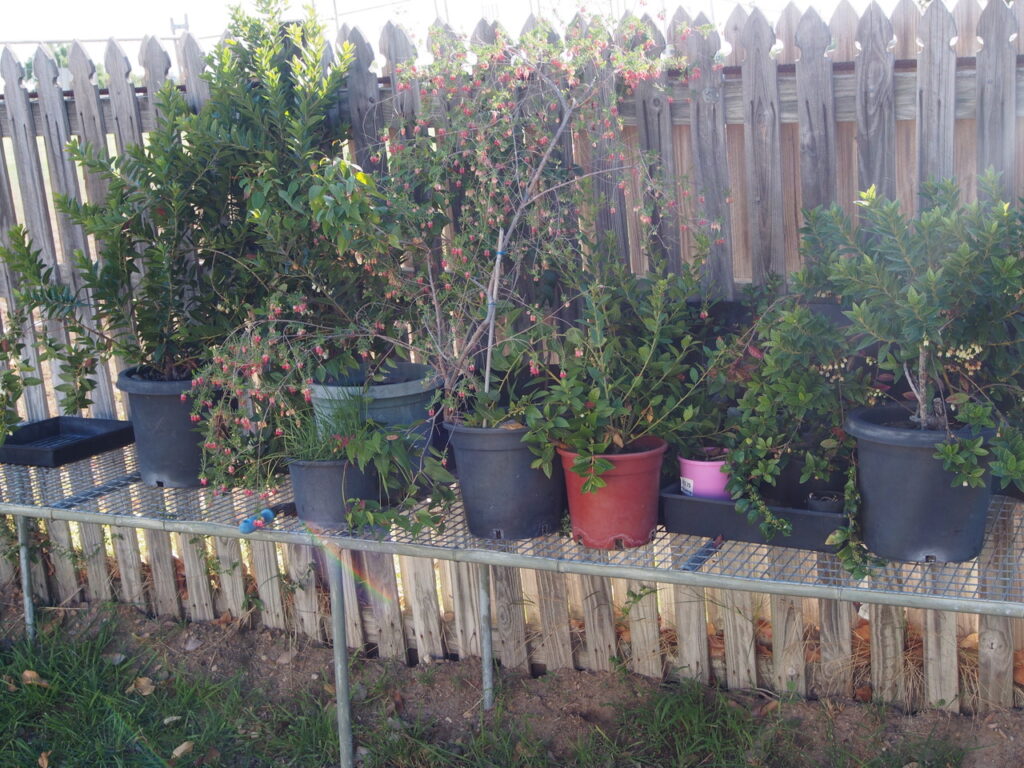
This month we highlight an uncommon plant that occurs naturally only on steep peaks SW of Townsville. It was first recognised scientifically in 1997 [1] and its conservation status is rated ‘Vulnerable’ due to very restricted distribution.

In the wild, Dubouzetia saxatilis grows as a small shrub extending almost horizontally from steep cliffs. It is seldom seen in gardens. People have planted in-ground specimens with mixed results: some survived over years, while others suffered sudden failure. One successful specimen in a suburban garden reached 1.5 m and was about 4 years old at the time of the photo below.

A few enthusiasts have maintained healthy specimens in large pots over decades. We thank Keith for his expert advice included below.

Successful Dubouzetia saxatilis in pots flower quite frequently but don’t seem to set seed. Propagation from cuttings is feasible but source material is scarce because these plants are slow growing.
Naturally growing Dubouzetia saxatilis tend to look somewhat untidy because their older branches die back while younger, more vigorous shoots develop. With plants in pots, occasional careful pruning can help to produce a more attractive plant.
Rather than using Dubouzetia saxatilis as a single feature plant, it is more effective to place several potted plants together in a cluster which helps to provide shelter for the developing cutting-grown plants.
Keeping Dubouzetia saxatilis pots on an open-mesh raised bench (see photo below) may be beneficial as it ensures good drainage and air circulation. It also helps to keep roots cool. In contrast, some Dubouzetia saxatilis that were placed on concrete and other hard surfaces have failed, possibly because their roots were subject to excessive heat.

For more details, see our species page for Dubouzetia saxatilis.
Reference [1] Bean, A., & Jessup, L. (1997). Dubouzetia saxatilis (Elaeocarpaceae), a new species from north Queensland, Australia. Austrobaileya, 4(4), 673-675.